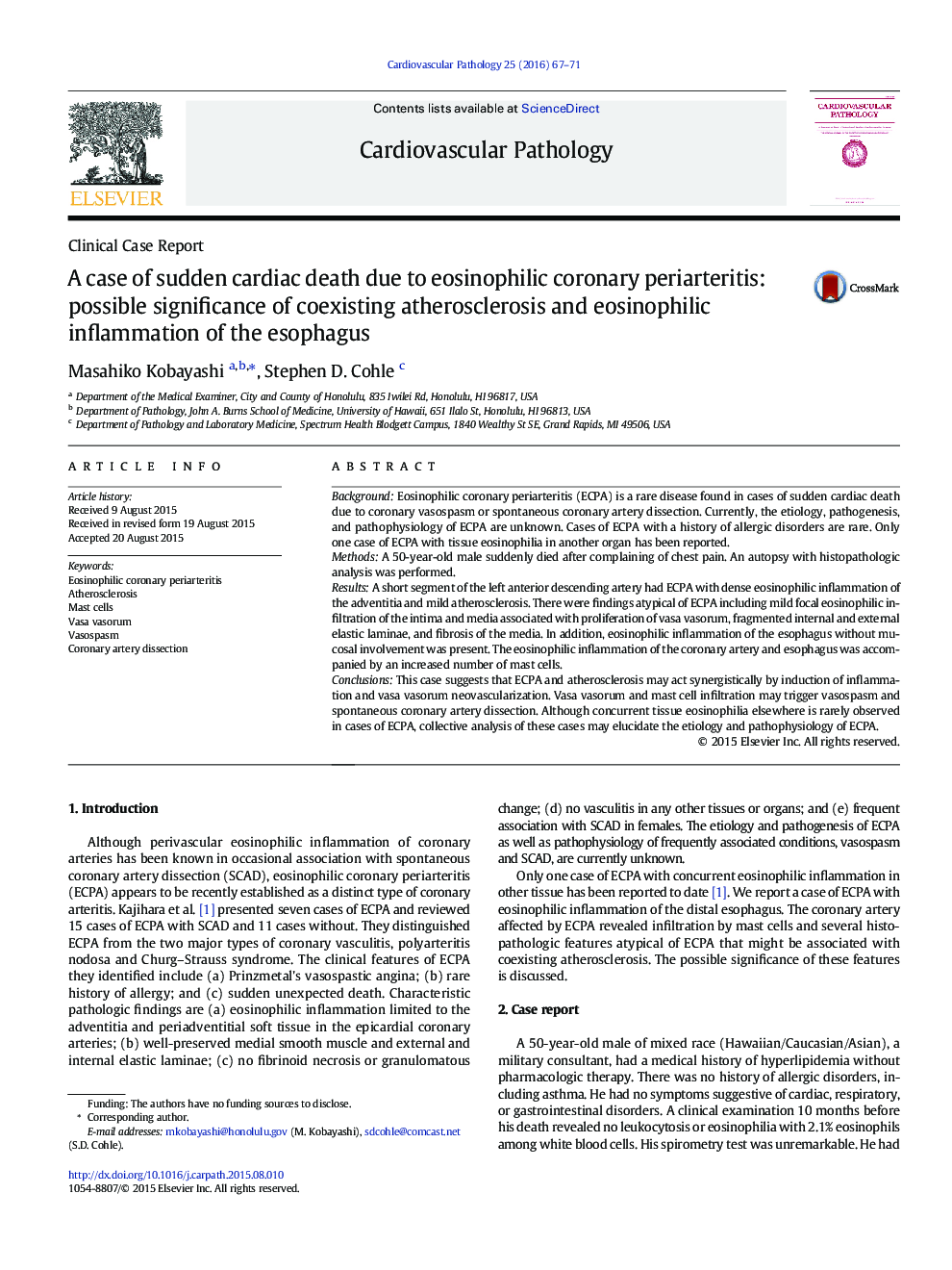| Article ID | Journal | Published Year | Pages | File Type |
|---|---|---|---|---|
| 5951826 | Cardiovascular Pathology | 2016 | 5 Pages |
BackgroundEosinophilic coronary periarteritis (ECPA) is a rare disease found in cases of sudden cardiac death due to coronary vasospasm or spontaneous coronary artery dissection. Currently, the etiology, pathogenesis, and pathophysiology of ECPA are unknown. Cases of ECPA with a history of allergic disorders are rare. Only one case of ECPA with tissue eosinophilia in another organ has been reported.MethodsA 50-year-old male suddenly died after complaining of chest pain. An autopsy with histopathologic analysis was performed.ResultsA short segment of the left anterior descending artery had ECPA with dense eosinophilic inflammation of the adventitia and mild atherosclerosis. There were findings atypical of ECPA including mild focal eosinophilic infiltration of the intima and media associated with proliferation of vasa vasorum, fragmented internal and external elastic laminae, and fibrosis of the media. In addition, eosinophilic inflammation of the esophagus without mucosal involvement was present. The eosinophilic inflammation of the coronary artery and esophagus was accompanied by an increased number of mast cells.ConclusionsThis case suggests that ECPA and atherosclerosis may act synergistically by induction of inflammation and vasa vasorum neovascularization. Vasa vasorum and mast cell infiltration may trigger vasospasm and spontaneous coronary artery dissection. Although concurrent tissue eosinophilia elsewhere is rarely observed in cases of ECPA, collective analysis of these cases may elucidate the etiology and pathophysiology of ECPA.
Graphical abstractA 50-year-old male died of coronary vasospasm associated with eosinophilic coronary periarteritis (ECPA).Download high-res image (324KB)Download full-size image
